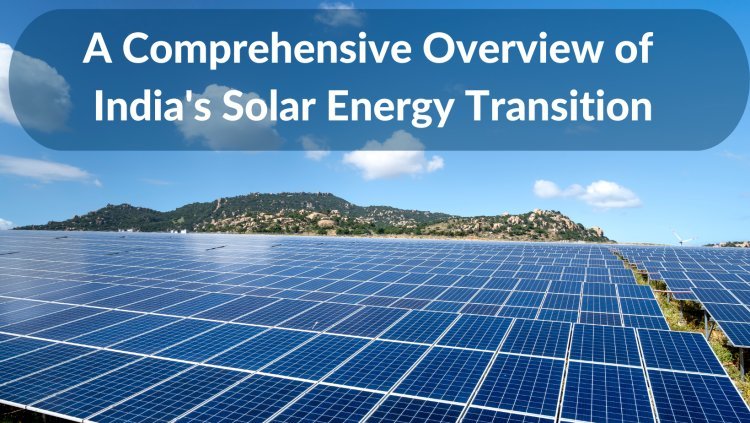A Comprehensive Overview of India's Solar Energy Transition
In recent years, India has emerged as a global leader in the field of solar energy, showcasing a remarkable transition towards a more sustainable and renewable energy landscape.

In recent years, India has emerged as a global leader in the field of solar energy, showcasing a remarkable transition towards a more sustainable and renewable energy landscape. This shift is not only driven by environmental concerns but also by the need to address energy security and access issues. This article provides a comprehensive overview of India's journey in harnessing the power of the sun and its ambitious plans for a sustainable energy future.
1. Historical Perspective:
The roots of India's solar journey can be traced back to the early 2000s when the government initiated policies to promote renewable energy. However, it was with the National Solar Mission launched in 2010 that the country set ambitious targets for solar energy generation, aiming to achieve 20 gigawatts (GW) of solar power capacity by 2022.
2. Policy Initiatives Driving Solar Adoption:
Key to India's success in solar energy has been the formulation of robust policies and initiatives. Explore the various schemes and programs introduced by the government, such as subsidies, incentives, and tax benefits, that have incentivized both public and private sector participation in the solar sector.
3. Current Status and Achievements:
Provide an update on India's progress towards its solar energy goals. Highlight key milestones, achievements, and the rapid growth in solar capacity installation. Discuss how the country surpassed its initial targets and became a significant player in the global solar market.
4. Technological Advancements:
Delve into the technological innovations that have played a pivotal role in the growth of India's solar sector. Discuss advancements in solar panel efficiency, energy storage solutions, and smart grid integration, showcasing how these developments contribute to the reliability and scalability of solar power.
5. Challenges and Solutions:
Acknowledge the challenges faced by the solar energy sector in India, such as intermittency issues and grid integration. Explore the solutions and strategies adopted to overcome these challenges, including energy storage technologies, grid management systems, and policy adjustments.
6. Future Outlook and Ambitions:
Look ahead to India's future plans for solar energy. Discuss the revised targets, new policy initiatives, and the role of solar energy in India's broader sustainable development goals. Highlight international collaborations and partnerships that aim to further propel India's solar ambitions.
7. Economic and Environmental Impact:
Examine the economic benefits of India's solar transition, including job creation, investment opportunities, and reduced dependence on traditional fossil fuels. Also, discuss the positive environmental impact, such as reduced carbon emissions and improved air quality.
8. Community Engagement and Awareness:
Explore the importance of community engagement and public awareness in the success of India's solar energy transition. Discuss initiatives to educate and involve local communities, fostering a sense of ownership and responsibility towards sustainable energy practices.
Conclusion:
India's solar energy transition is not just a response to global environmental concerns but a strategic move towards energy independence and economic growth. As the nation continues to harness the power of the sun, it sets an inspiring example for the world, proving that sustainable development is achievable through innovation, policy commitment, and collective effort.
What's Your Reaction?

































